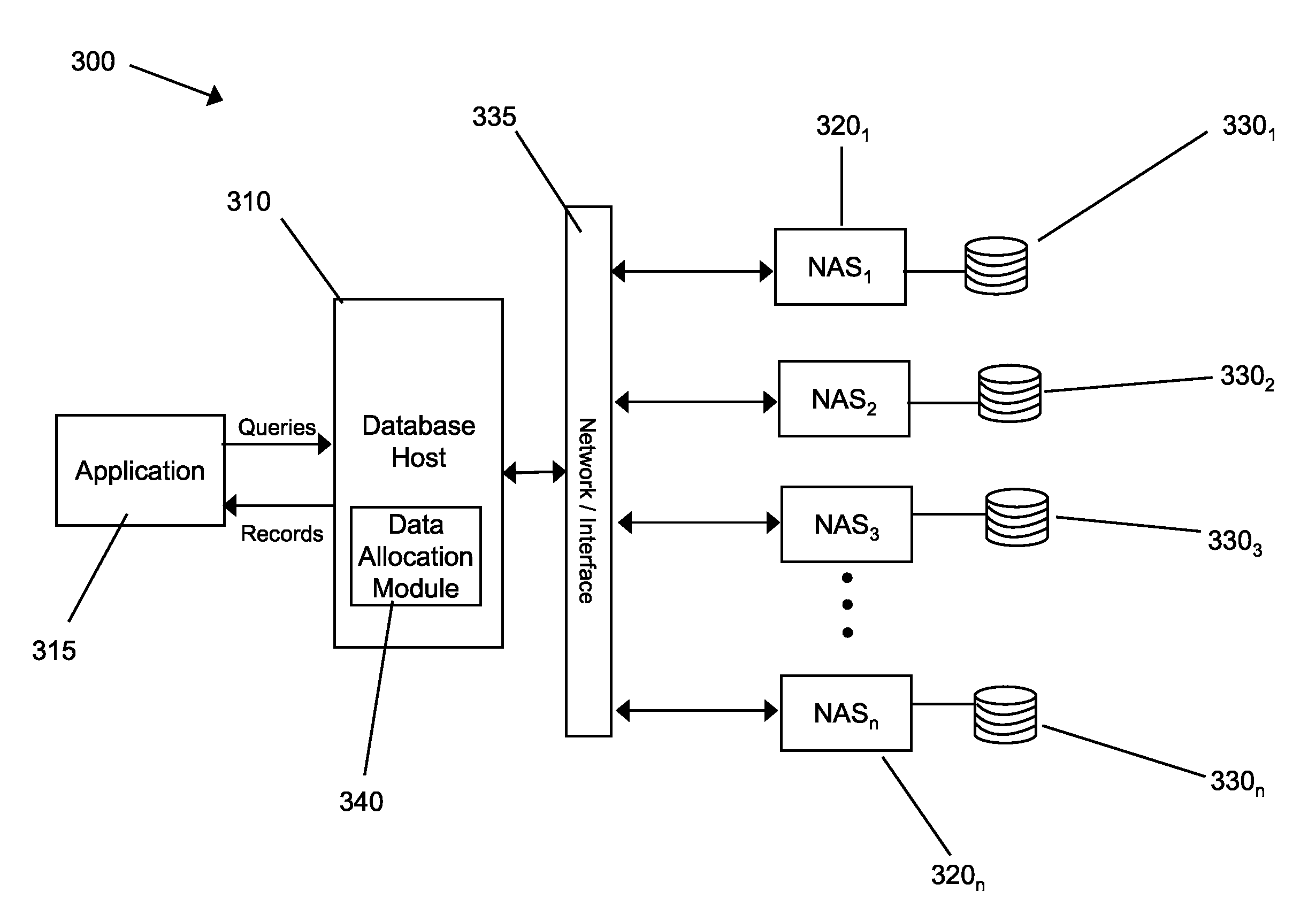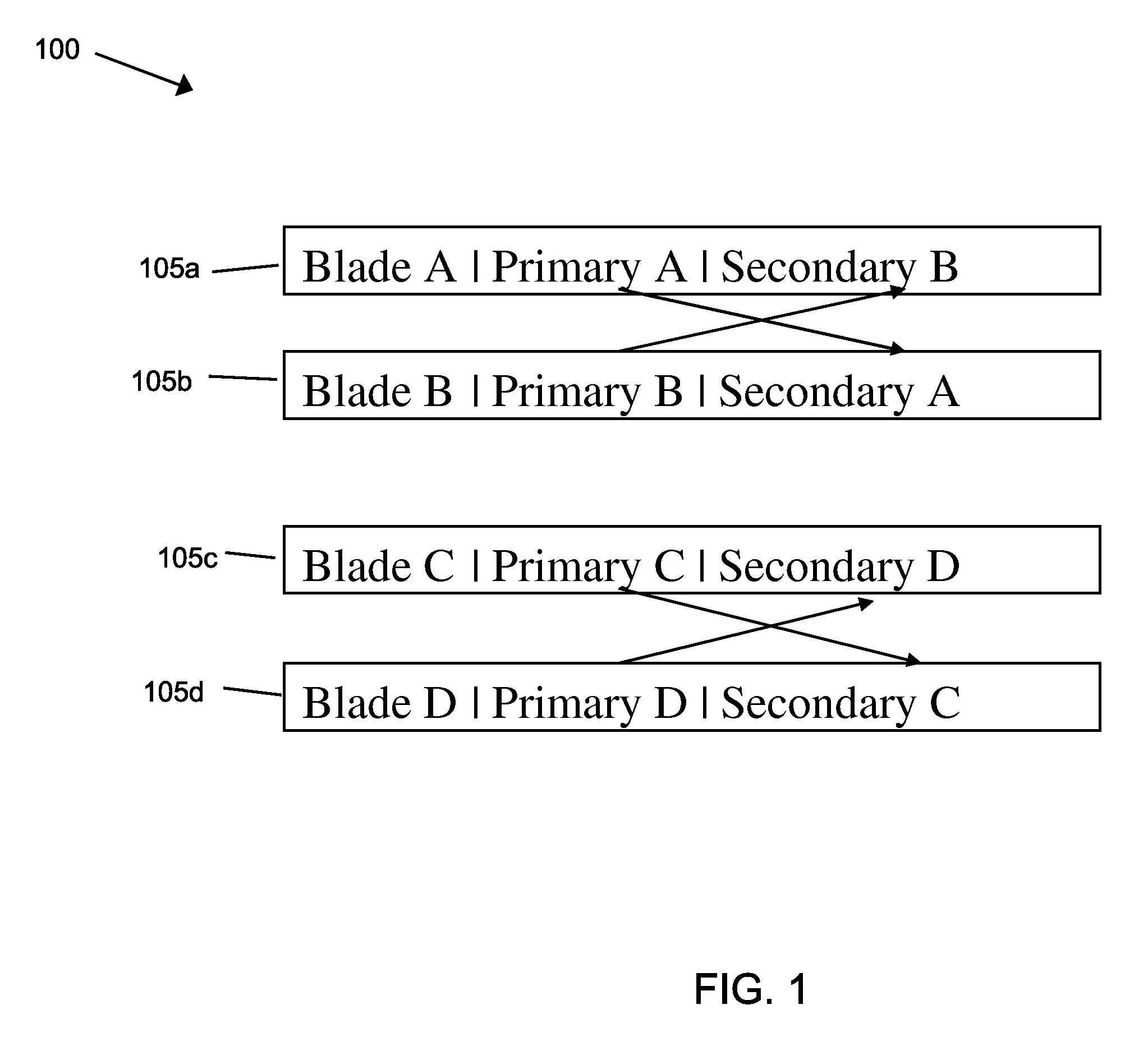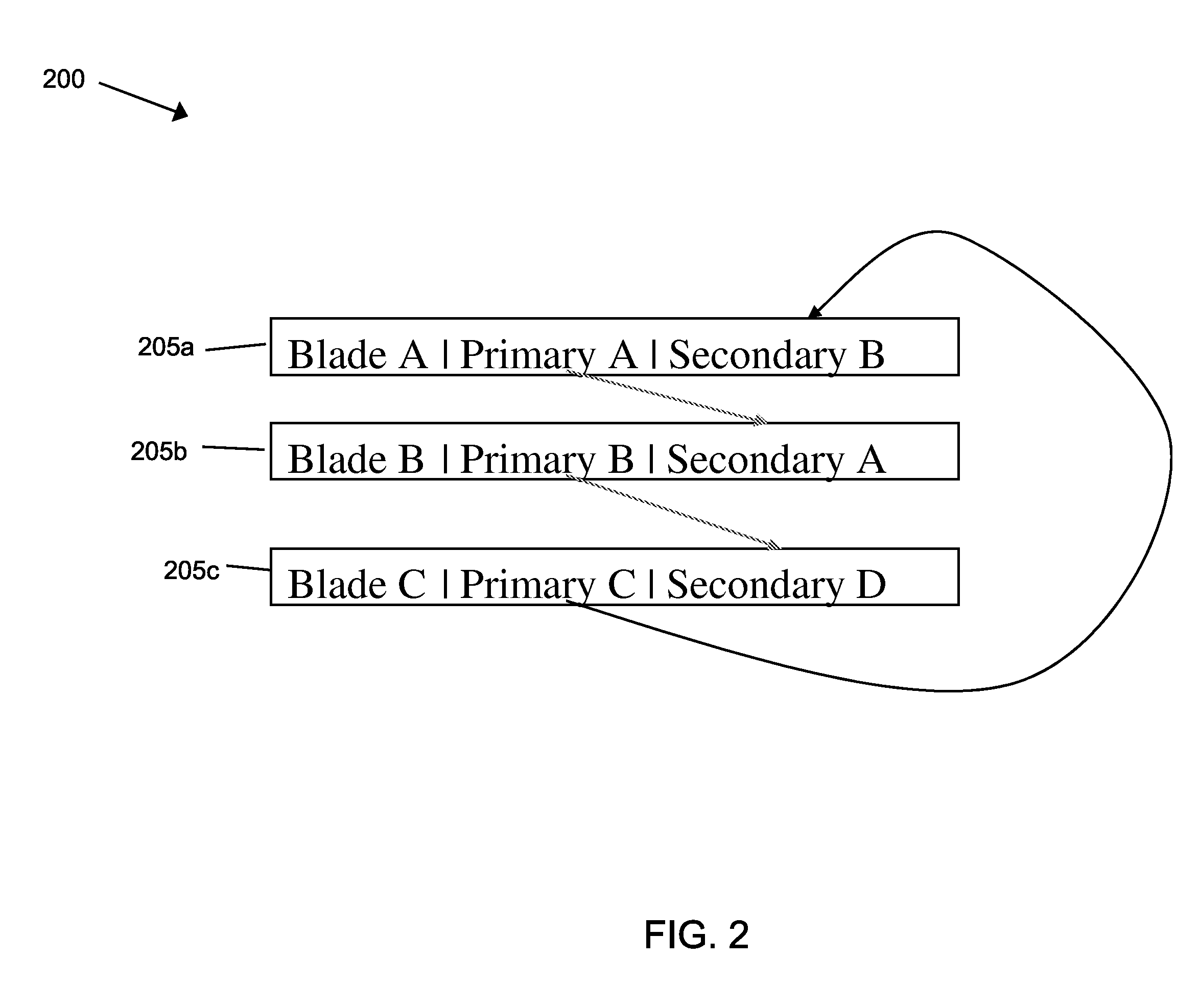N+1 failover and resynchronization of data storage appliances
a data storage appliance and failover technology, applied in the field of system storage of computer data, can solve the problems of node failure, most processing resources, and most time to complete, and achieve the effect of not impairing performan
- Summary
- Abstract
- Description
- Claims
- Application Information
AI Technical Summary
Benefits of technology
Problems solved by technology
Method used
Image
Examples
Embodiment Construction
[0017]In general, embodiments of the invention involve systems and techniques for implementing mirroring in a massively-parallel database processing architecture. Typically, computer applications and enterprise information systems utilize one or more database management systems (DBMS) to provide data, configuration information, and user permissions. In certain cases, a single DBMS “instance” may support a single application, whereas in other cases, many applications may rely on one DBMS. Frequently, enterprise information systems utilize data from numerous applications (combining data from sales systems, inventory systems, and financial systems into a single executive-level performance dashboard, for example). As used herein the term “application” broadly refers to any type of computer-implemented system that uses and / or manipulates data, including, for example, enterprise information systems. The number and type of applications can vary widely, and include both transactionally base...
PUM
 Login to View More
Login to View More Abstract
Description
Claims
Application Information
 Login to View More
Login to View More - R&D
- Intellectual Property
- Life Sciences
- Materials
- Tech Scout
- Unparalleled Data Quality
- Higher Quality Content
- 60% Fewer Hallucinations
Browse by: Latest US Patents, China's latest patents, Technical Efficacy Thesaurus, Application Domain, Technology Topic, Popular Technical Reports.
© 2025 PatSnap. All rights reserved.Legal|Privacy policy|Modern Slavery Act Transparency Statement|Sitemap|About US| Contact US: help@patsnap.com



